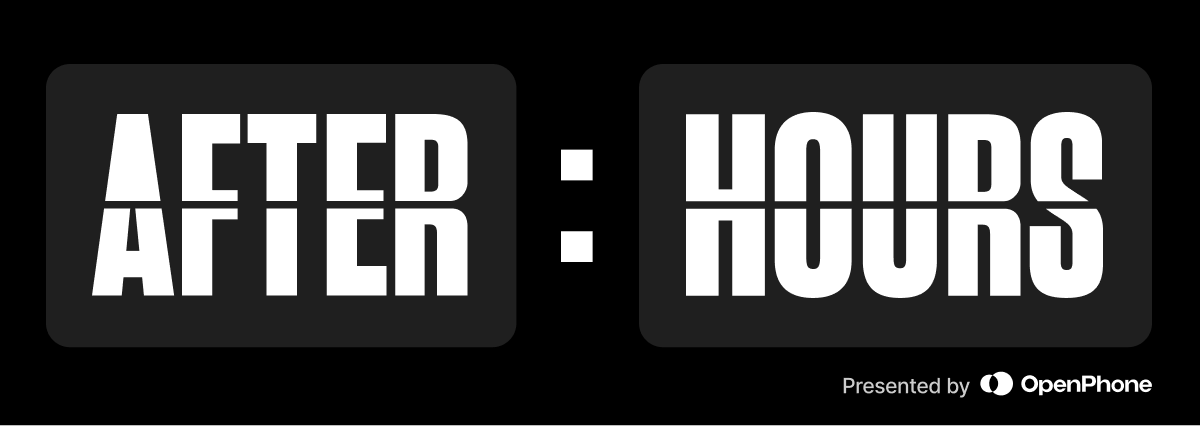
Issue No.2

My visits to Vesuvio
What getting free beer taught me about managing customer sentiment
Richard Huffaker
There's a great bar in San Francisco's Little Italy called Vesuvio Cafe. In the 1950s, it was one of the go-to hang outs for the writers and poets of the Beat movement. Decades later, it continues to be among the most popular spots to grab a drink in all of San Francisco.
Back in the early 2010s (I don't know about you, but I feel very old all of a sudden) I was at Vesuvio at least once a week. I worked at a startup called Weebly, and our HQ was in a building on a quiet street ten minutes away. A couple of my friends and I would walk over for happy hour, usually on Tuesdays. Rain, shine, or, more often than not, fog, we were there.

Showing up regularly on the same day, week in and week out, meant we got to know a couple of bartenders and servers. They also got to know us.
When we first started going in they'd always ask us what we wanted. We'd have two beers and call it a night.
After a couple of months they just started bringing us our first beers as we walked in. Mine was San Francisco brewed Anchor Steam, and my friend George usually got Lagunitas IPA.
A couple of months of this and they not only brought us our first beers as we walked in, they also had a new beer ready as we finished our first round. They then began adding on a third additional pint on top of that one for free.
They knew exactly how to keep us coming back — making sure we never had an empty glass and always felt taken care of..
Now, you may begin to see why this story about me drinking beers at a cool bar on Tuesdays is in this business-focused newsletter.

Since we saw these bartenders and servers in person on a regular basis, they had a good handle on how happy we were as customers. What would be called in business terms, our customer sentiment.
Everything else being equal, a Forbes study of 1,000 US customers found 58% are willing to pay more for good service. And even more than that are likely to remain loyal or choose to use your company over a competitor for the same reason.
It's pretty easy to get a feeling for someone's sentiment when you talk to them on a regular basis (or are serving them beers). It may not be so easy when you're juggling twenty different text threads and managing phone calls while trying to help multiple customers.
The question is how can you manage your own customer sentiment?
Well, one way to learn how to do it is to read the article I've linked to above.
Or you can learn about one of OpenPhone's many useful features that will help you do so from Kat and Justine below.
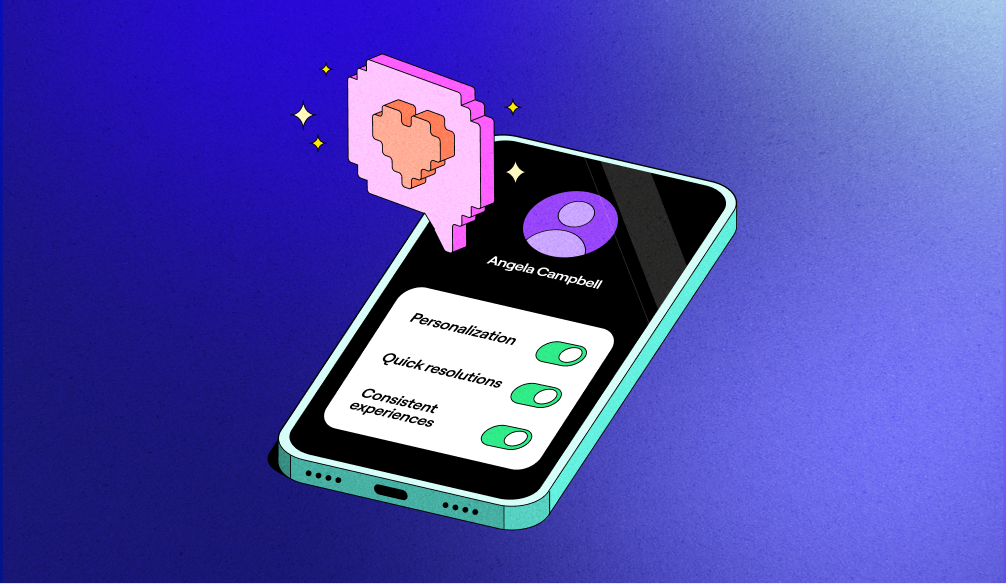
Justine and Kat explain OpenPhone
Justine Delgadillo
Kat Buffington
Whether or not you want to give away a free beer, you can automatically track the sentiment of customer phone calls using AI call tags. These tags flag how a customer seemed to be feeling or what they were discussing, letting you catch, or simply remember, a negative call to follow-up on before the caller turns into a lost customer, or file away a particularly positive call to make notes about or potentially reward in some way as in Richard's example above.
These also don't have to be quite so black-and-white or even related to sentiment at all. You can use tags to note whether a call involved a:
- Feature request
- A support question of some kind
- An ask to reschedule a meeting
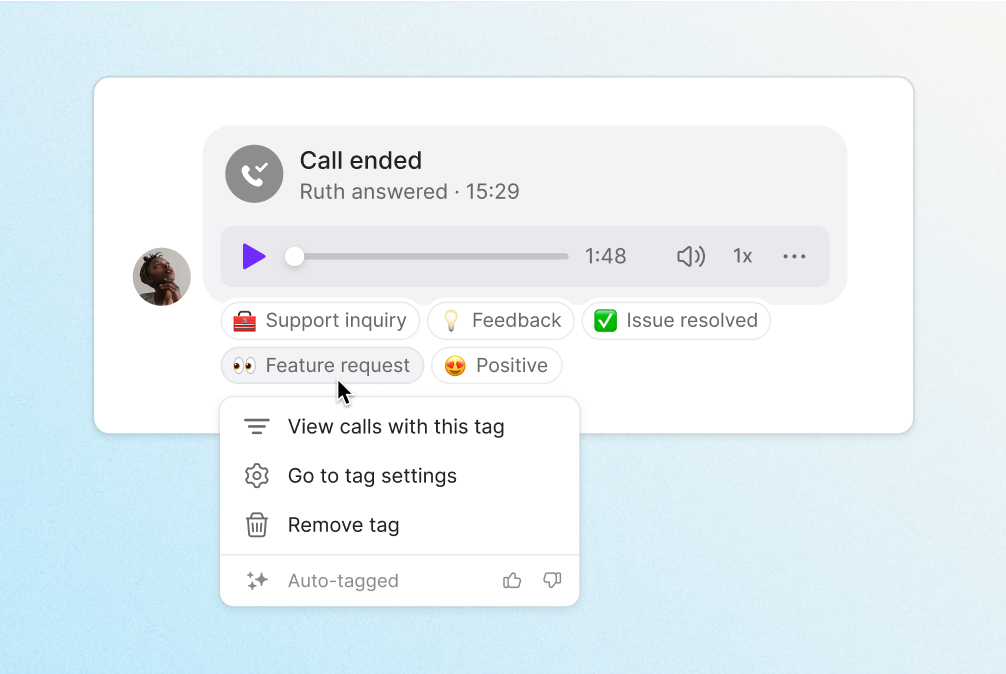
Or any number of other topics that you or your business want to make note of to take action on later. If someone can say it, AI call tags can (probably) capture it and make note of it.
To turn on AI call tags you should:
- Navigate to the settings for the phone number you want to configure.
- Find the Call assistant section.
- Turn on "Add tags to calls"
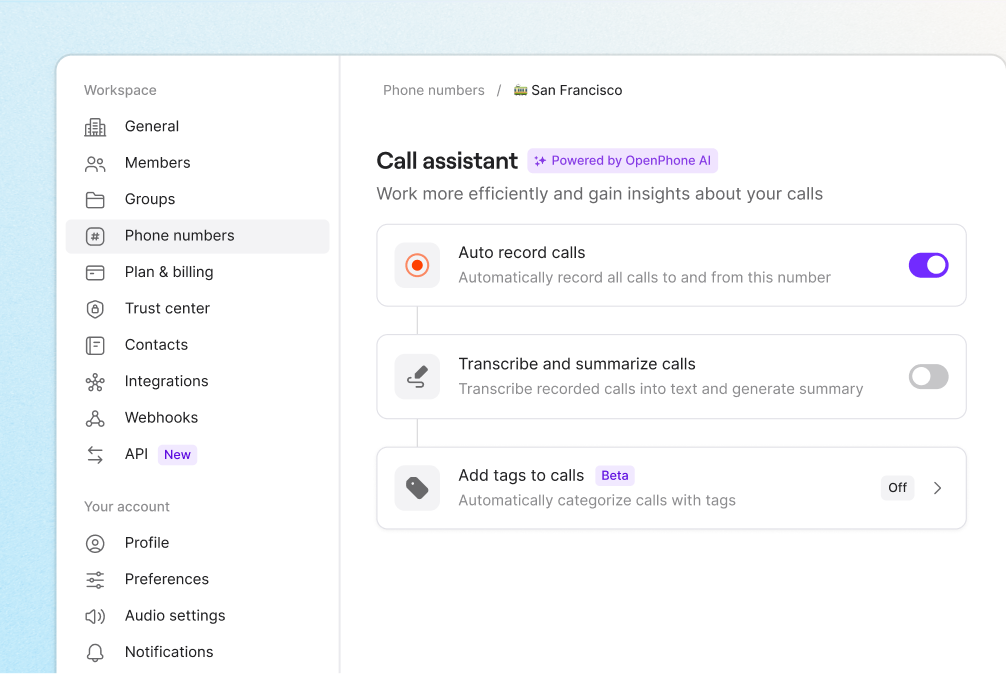
By default, OpenPhone provides a few predefined tags to get you started. Feel free to edit, disable, or delete these tags at any time.
Here's how you add your own tags:
- Go to the AI call tags settings page.
- Click Add Tag.
- Name your tag.
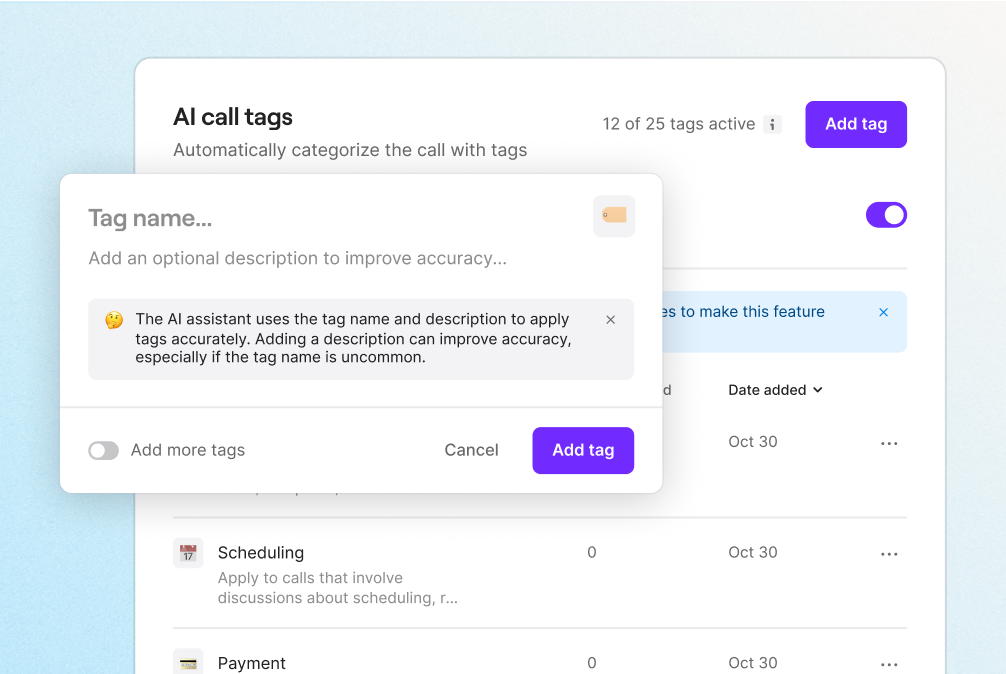
It's that easy. You can also add a description to guide to AI to better understand when to apply a tag. This can be updated at any time, so it doesn't have to be perfect on the first go.
To find calls that fit under a given tag, you can do one of two things:
- Click on a tag. Look at the calls that come up under that tag.
- Or go to your calls view and use the filter option to select specific tags.
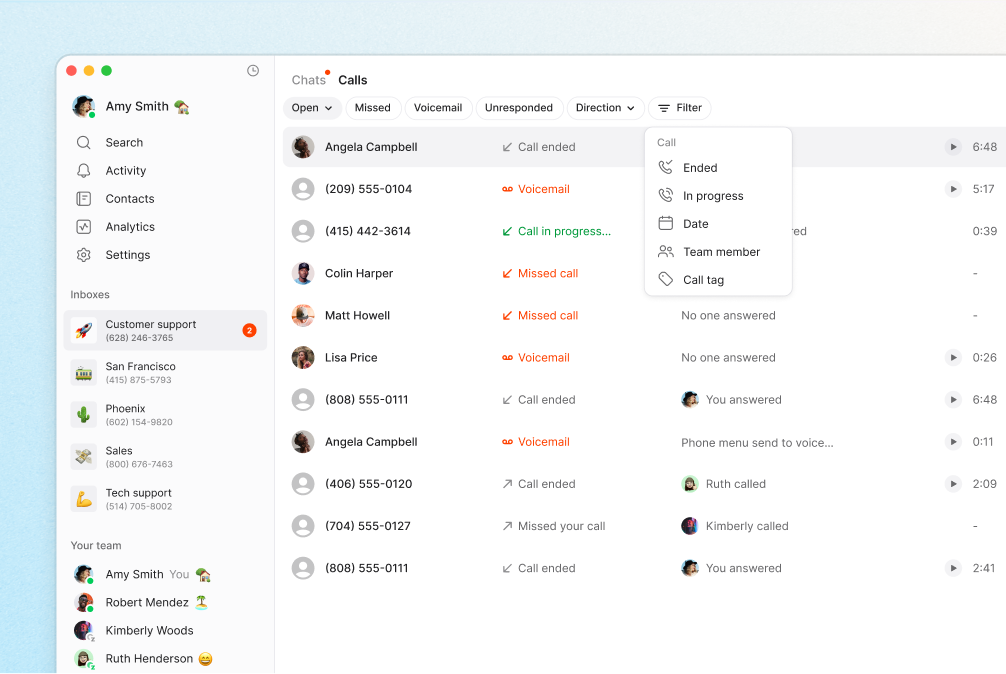
Visit our Resource Center to learn more about using call tags.

Founders Corner
Daryna Kulya
I'm Daryna, the co-founder of OpenPhone. In the last edition of After Hours, I shared how we got our first 1000 customers using Reddit. You can read the full story in my Founder to Founder newsletter or watch my YouTube video about it.
But then I was introduced to a marketing channel that certainly scaled for us (and soon became a key way we acquire customers) — SEO.
Fast forward to early 2020. We raised our Seed round and started getting early signs of product-market fit. One of the first things we did was invest in content & SEO.
And that investment paid off, big time.
So much so that content & SEO became our 2nd best channel of acquisition (after word of mouth) and got us to $10m ARR and beyond.
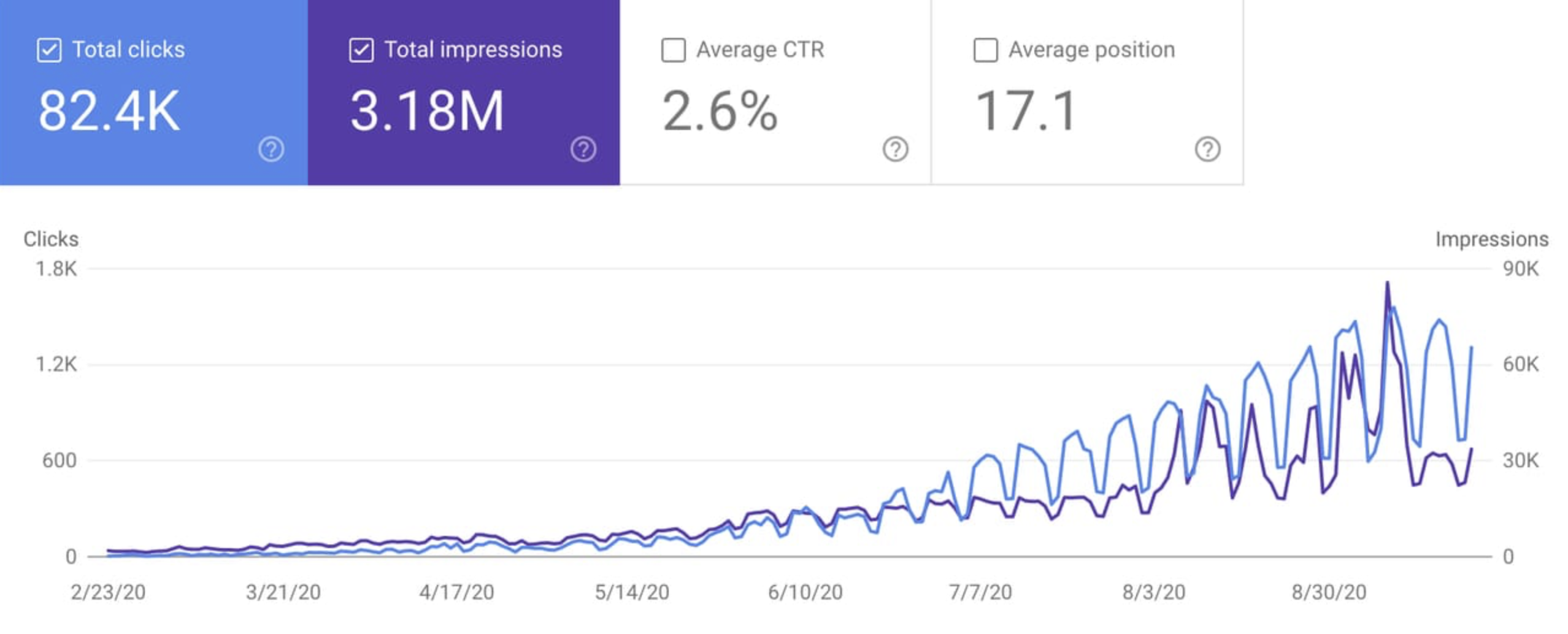
Prior to 2020, we focused on channels and activities with a faster payback time. SEO takes a while to work. And at the time we didn't feel we could actually afford that.
Here are 3 steps we took to get things moving. If you'd like to read even more, check out my deeper dive into this topic.
1 - Set up our blog on WordPress
There's debate whether WordPress is still the right choice in 2025, but in 2020 it was a solid option. Our blog is still on WordPress now.
I made the mistake of publishing our first content on Medium instead of our own property. While Medium helped me refine my writing skills and get some initial traction, we were basically contributing to Medium's SEO rather than our own. Bad idea.
2 - Started writing articles for FAQs we would get from customers and prospects
Initially, I didn't do much in terms of keyword research. I just relied on answering questions that I got from talking to customers or saw on relevant subreddits.
For example, some of the first articles I've written were:
Using your personal phone number for business? Here's why you shouldn't.
At the time, I was pitching OpenPhone to a lot of founders who were using their personal cell # as the company number so I created a resource to help me sell.
How to remove your personal phone number from the internet
I saw a post on one of the forums from a founder who mentioned how his personal cell was destroyed after using it as a company number. So I reached out to help him remove it from the internet and used that experience as content.
Since I was the sole sales rep at the time, I didn't have to wonder what marketing collateral would be helpful for sales. 😅
But as a self-serve, high-volume business, this wasn't good enough. We needed to make sure that the content we were producing could be distributed through search engines too.
3 - Looked at the keyword data
Instead of relying on my intuition and customer conversations, I also started using search data to tell me what we should write about.
I was curious to see what terms our competitors were ranking for and where there was an opportunity to compete.
This led to us stumbling upon the "voicemail greeting" topic.
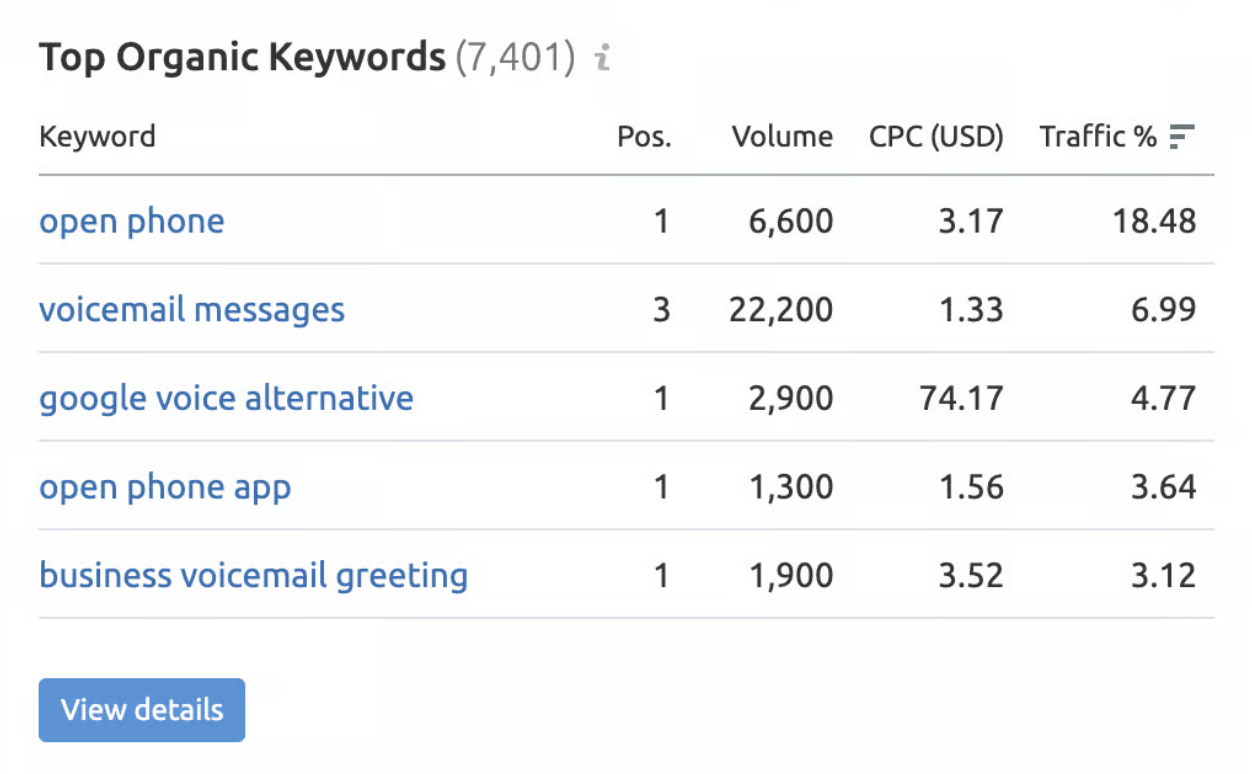
The reason we were drawn to this topic beyond the traffic opportunity is that we could also share this content with folks in-app who were thinking about what to say in their voicemail greeting.
Initially, we created a list of 21 professional voicemail greetings (with audio examples that we recorded ourselves). Again, talk about doing things that don't scale. 😅
That piece is now updated to 45 examples and continues to be a driver of useful traffic.
More so, it's been upgraded to a tool — the AI voicemail greeting generator. Instead of recording those examples yourself, you can let AI do the work for you.
SEO is a long game, but when it works, it really works.
The best time to plant a tree was 20 years ago; the second-best time is now. The same applies to content & SEO. Read my full discussion of our early SEO efforts.
This email was sent to trongrau1368.taphone@blogger.com. Update your email preferences

Đăng nhận xét